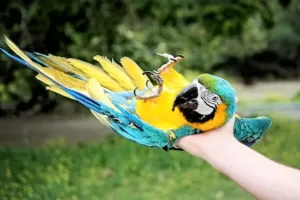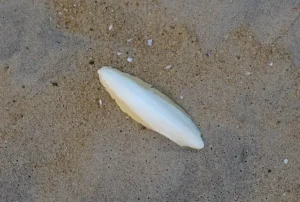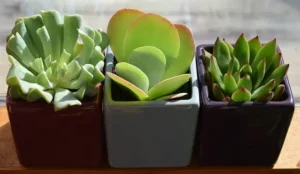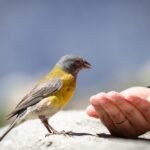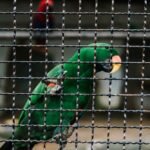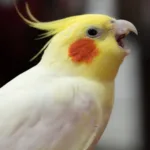Parrots aren’t generally considered to be very affectionate, probably because the way they show their love is often overlooked or unnoticed by most owners.
Of course, we show them our love by taking care of them, rewarding them with treats, and giving out lots of cuddles, but the question always remains – how do they love us back?
Reading a parrot’s body language cues is not easy, especially if you’re a new parrot owner. Parrots may not express affection in the same way that other animals do, but they definitely have their own unique and endearing touch when it comes to showing us love.
There are several non-verbal ways parrots express their abundant love for you. Here are 15 ways parrots let you know they love you.
Quick Navigation
Soft Vocalisations
Although we think of parrots as noisy and loud birds, they can make gentle vocalizations when they desire to. However, they usually reserve these soothing sounds for their favorite people only.
Parrots can produce varying sounds and have quite a diverse repertoire of vocalizations. Some of them include purring, singing, chirping, and low chattering.
These are often mellow sounds that indicate that the parrot is relaxed and content in its environment. You’ll often hear these sounds while you are petting them.
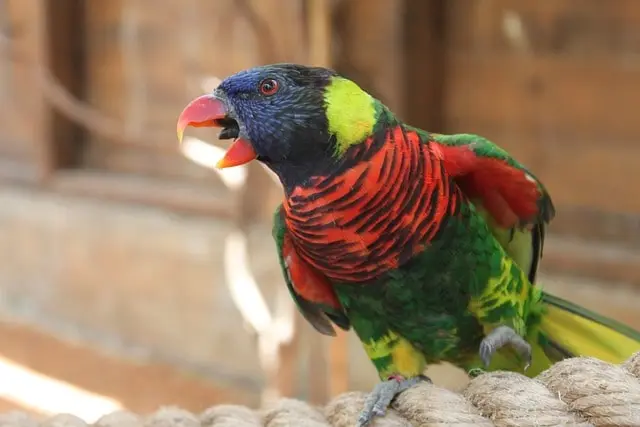
Licking
Parrots only lick their favorite people. If your parrot is licking you with its tongue, it is another gesture of love shown by them.
Licking your face, lips, or clothing, indicates great affection and also serves as a way to mark their territory. Parrots can be territorial with regard to the person they like the most.
Regurgitating Food On You
All parrot owners know how much parrots love their food. So if your parrot comes up to you and regurgitates its food on you, it means it wants to share some with you.
While it may not be the most pleasant way of showing you they care but hey, a gift is a gift. So when a parrot offers you its food, reward it by giving it a few head scratches. That way you acknowledge their show of love and make them feel good.
However, don’t encourage this behavior. Sometimes, parrots can regurgitate excessively which can be socially undesirable among other concerning things.
It can also be an indication that the parrot may have something lodged inside its throat that it is unable to cough out.
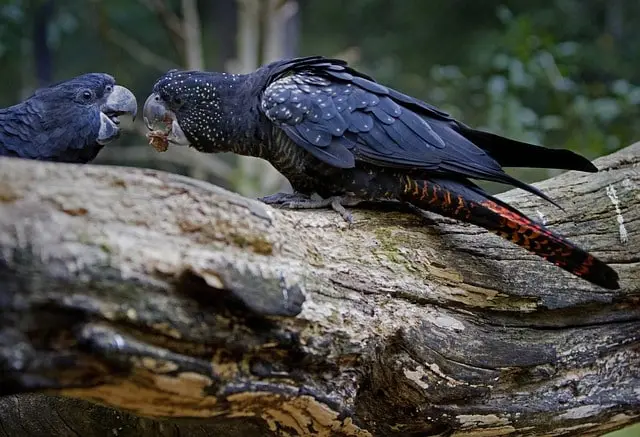
Rubbing Its Beak On You
Parrots often rub their beaks against different objects, including their human companions, as a form of affection.
A parrot rubs its beak on flat surfaces after eating to wipe food off its face. However, when they rub their beak on you it is a sign they want your attention.
They may nudge with their beaks to tell you that they want to play. Sometimes, they may also do it because of the way it feels on your soft clothes.
Preening
Preening is a common social behavior that parrots use to show affection in the wild. Parrots will groom you the same way as their flock mate.
They use their beak to clean and preen different areas of your body. Mine always tries to groom my beard by aligning each hair and also sometimes beaking or nibbling it. It feels like gentle bites when it is picking out dirt and debris it finds.
When parrots live in large flocks in the wild, this is normal behavior among them. They will help each other out by preening areas that are difficult to reach on their own. If you have a companion for your parrot, you may have noticed the two, grooming each other’s head feathers.
So when your parrot is preening you, it means that it sees you as its flock mate and cares about your cleanliness and hygiene.
Light Nibbles
Unlike biting, nibbling is a gesture meant to signify the special place you have for your parrot. If you spend time petting your parrot while they’re in your arms, you may occasionally receive a couple of light nips from your parrot.
This is not meant to hurt you, instead, the parrot is just trying to demonstrate its affection. It is also a type of attention-seeking behavior and you may notice it particularly when your parrot is feeling jealous.
Cuddling
Not all parrots are cuddlers and very few like someone enough to cuddle with them. It is just not a very natural form of showing affection for these creatures.
It is often us who teach our parrots to cuddle. That being said, if your parrot allows you to be picked up and cuddled, it is a sign that it loves you back and understands the human ways of displaying affection.
When your parrot comes up to you for comfort, it can be a signal that they look up to you as a parent and feel protected with you. Plus, It can also be their way of asking for cuddles.
Wanting To Be Pet
While parrots like to be petted by their owners occasionally, they do not invite everyone to touch them. Many parrots won’t allow petting unless they trust the person.
If your parrot nudges you or bows its head, it’s a sign that they want you to scratch their heads. Your parrot also probably won’t mind you petting them in other places and would really enjoy that.
This is a clear sign of trust and close bonding between a parrot and its owner. This indicates that your parrots love being with you and crave your attention.
Eye Pinning
If your parrot’s eyes dilate while talking to you, it can be a sign that they are excited. Eye pinning, also known as eye flashing is when the parrot contracts its pupils, making it look freakishly small compared to the entire eyeball.
Seeing this for the first time can be a little scary, but don’t worry, it is natural behavior in parrots. Eye pinning can have a few other meanings, so to understand what your parrot really wants to convey, you need to look at the accompanying body language cues.
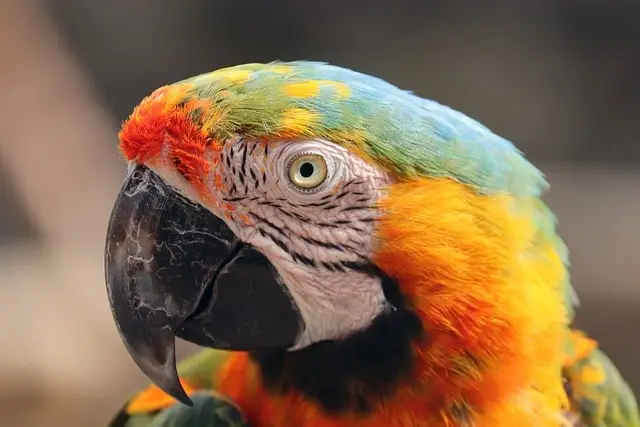
Wagging Their Tails
If your parrot shakes its tail when it sees you, it means it is excited and ready to play. Tail wagging can have a few different meanings in the parrot world, so you may have to look at other body language cues as well.
Tail wagging can be a part of courtship. If you have a male and female pair of parrots, this might be an indication of their bonding possibly in the breeding season.
Also, slow tail bobbing is often associated with breathing problems in parrots so you must ensure your parrot is doing it because of good reasons and not just from sickness.
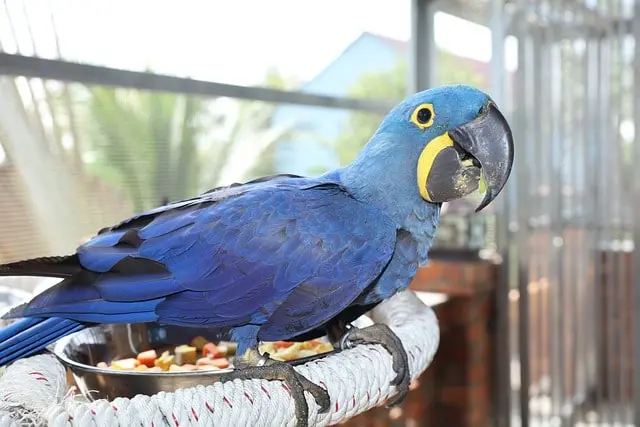
Flying Towards You
When a parrot flies towards you without you intentionally calling them, it means they consider you as their most trusted and favorite playmate. Sometimes they may fly back to their perch, to ask you to come and play with them.
This happens quite often when I enter the house. Its shows that they missed you while you were gone.
Flapping Wings In Excitement
Parrots will flap their wings out of excitement when they know it is their playtime. Most often, I see this behavior when I’m back from work or when they see me after a long time.
They will start flapping their wings hurriedly, sometimes flying towards me if they’re out of their cage, probably to show that they missed me.
I’ve also noticed this behavior from my parrot when they’re longing for attention. They may flap their wings to signal that they’re bored and want some time out of the cage.

Jumping Or Hopping
Just like how your parrots may start flapping their wings from the excitement of playing, jumping also indicate that your parrot is happy to see you.
Parrots start hopping on the ground when they’re happy. This up-and-down motion helps them release energy and have fun at the same time.
You’ll likely see them hopping around when it’s time for their exercise, though it can also be a greeting when you approach them.
Sleeping With You
It is well-known that parrots don’t trust people easily. As prey animals, they cannot afford to have their guard down for even a second, which is why they take their daytime naps with their eyes open.
However, when a parrot feels comfortable enough to sleep with you in your bed by curling up next to you, it is exposing its vulnerable side. If they were to encounter a threat, it is the least conducive position to fly off from.
So if your choose to sleep next to you, this means that they trust you more than anyone else and feel safe around you. It is not a very common behavior among parrots. Only a few people will be able to gain their parrot’s full trust like this.
Mimicking You
If it looks like your parrot is trying to copy you, it is most likely learning some new things from you, whether you taught it or not. Just like toddlers, parrots can learn fast.
They can pick new things from their surroundings, but most often they choose to learn things from the people they are fond of.
If your parrot mimics you, it means it pays attention to your quirks and manners, which is not a small thing. This only happens when you’ve formed a close bond with your parrot.
